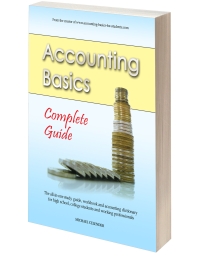Income, Expenses and Retained Earnings Question
by Roderick Merritt
(Goldsboro, NC, USA)
Q: Andersen's Nursery has sales of $318,400, cost of $199,400, depreciation expense of $28,600, interest expense of $1,000, and a tax rate of 34%. The firm paid out $16,500 in dividends.
What is the addition to retained earnings?

A: Great question Roderick and a good example of income and profits and their distribution for a company.
Here's the solution (income statement):
Sales $318,400
Less: Cost of sales $199,400
Gross Profit $119,000 ($318,400-$199,400)
Less: Depreciation $28,600
Less: Interest expense $1,000
Net profit before tax $89,400 ($119,400 - $28,600 - $1,000)
Less: Tax $30,396 ($89,400 X 34/100)
Net profit after tax $59,004 ($89,400 - $30,396)
If $16,500 of the net profit after tax was paid out in dividends then $42,504 ($59,004 - $16,500) was left over for the retained earnings account.
- Notes:
- Retained earnings is an account where a company accumulates profits (earnings) and from which dividends are paid to the owners. It is a type of reserve. Reserves are the 2nd main type of equity besides capital. Both capital (invested assets, usually cash) and reserves (accumulated profits) belong to the owner.
- Depreciation is an expense recording the gradual decrease of an asset's value over time. You can get a bunch of in-depth lessons, examples and exercises on depreciation in my basic accounting books.
- Dividends are a payout of profits (usually in the form of cash) to the owners of a company. They are like drawings but specifically for a company. Owners in a company are called shareholders.

Return to Ask a Question About This Lesson!.
© Copyright 2009-2021 Michael Celender. All Rights Reserved.
Click here for Privacy Policy.



